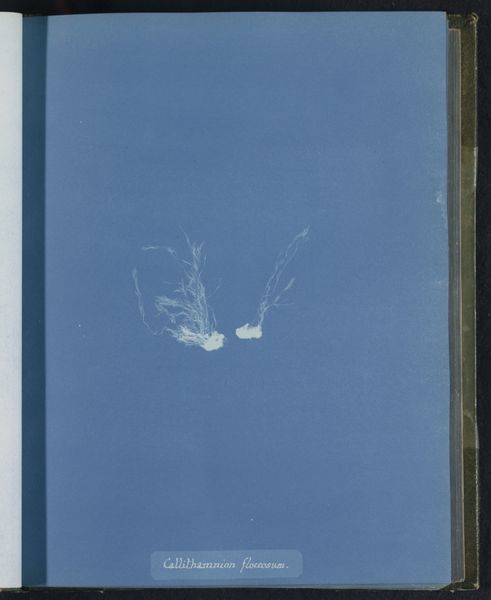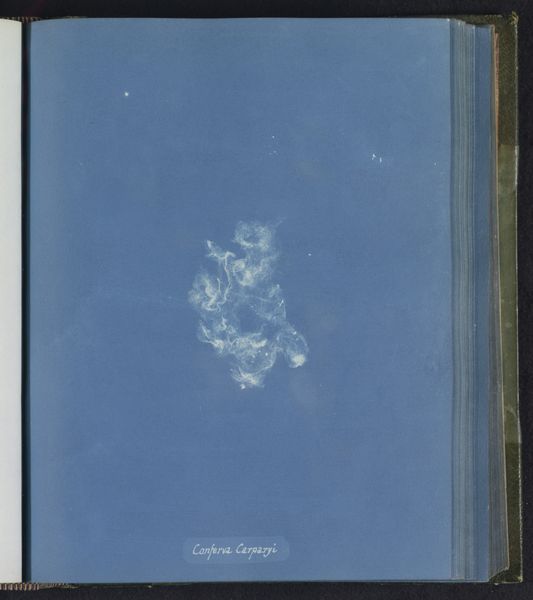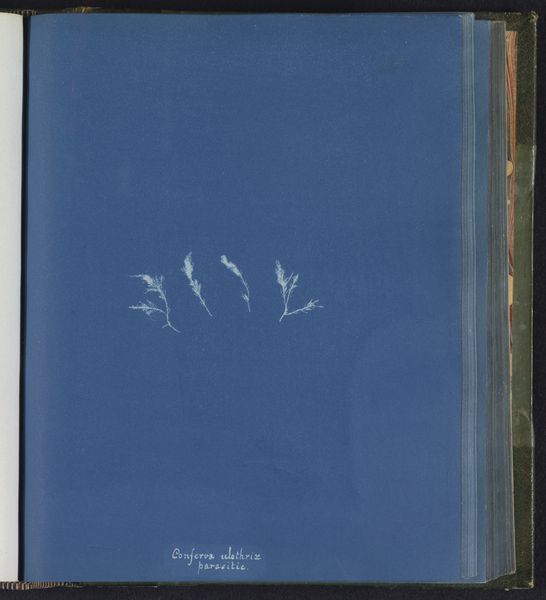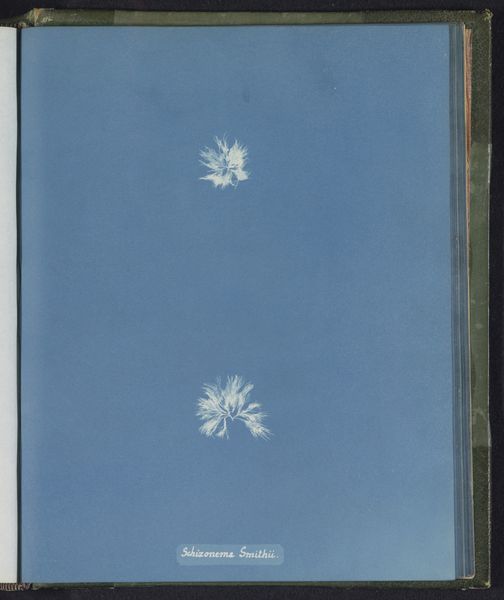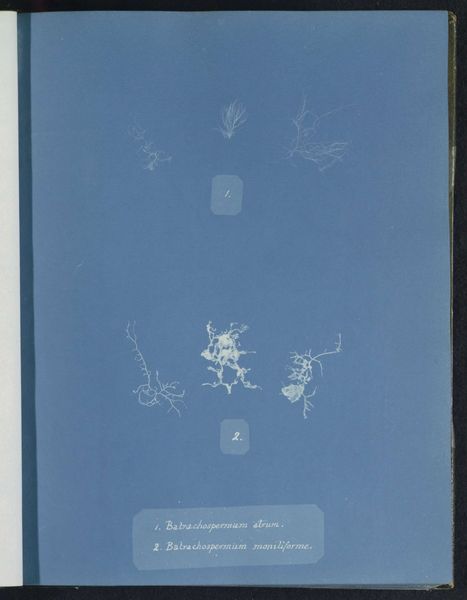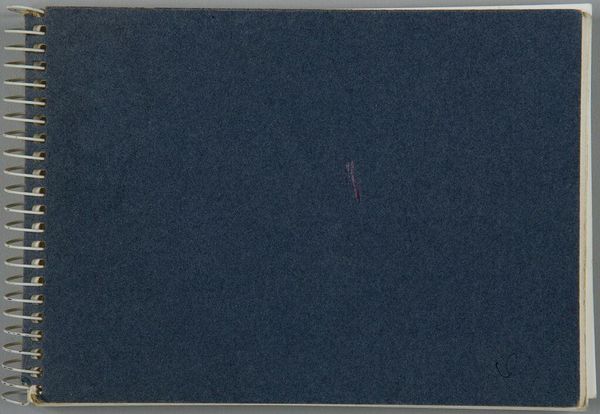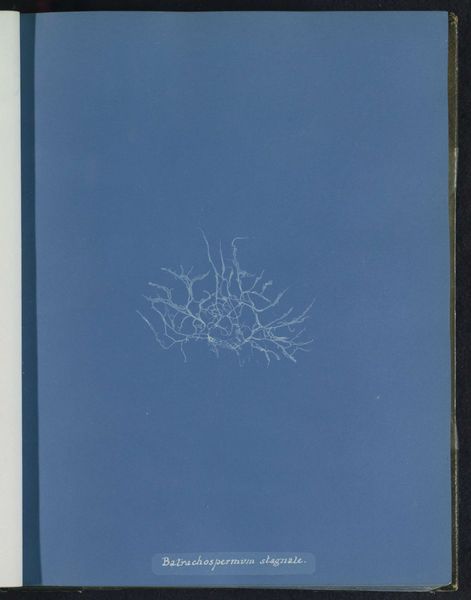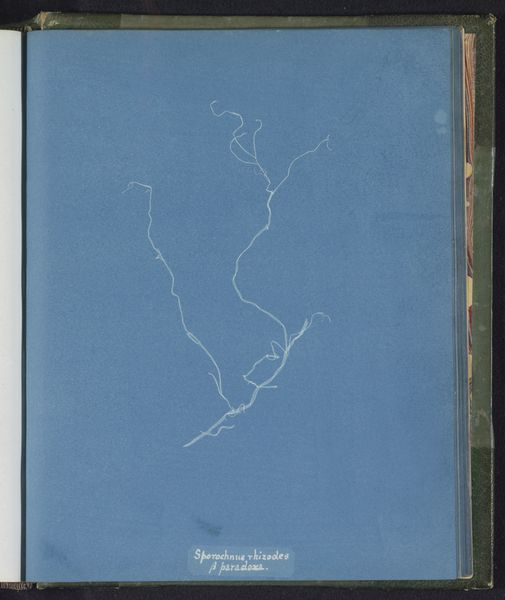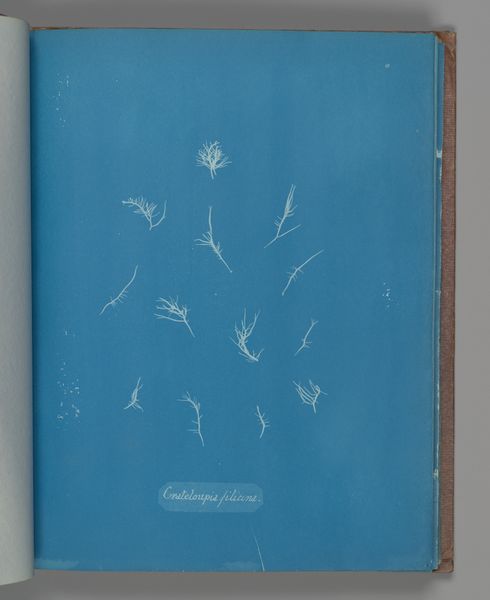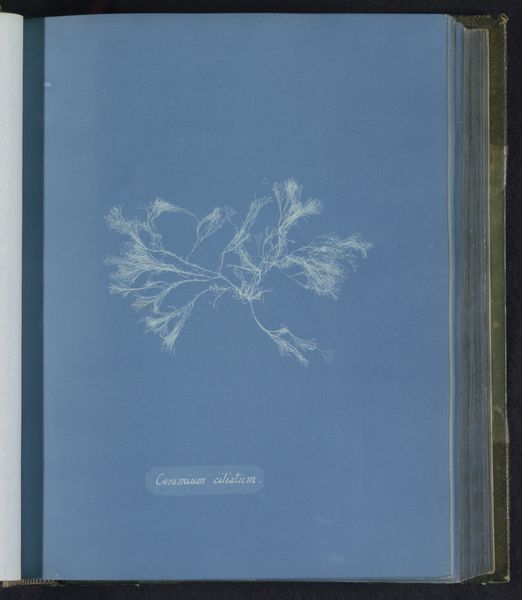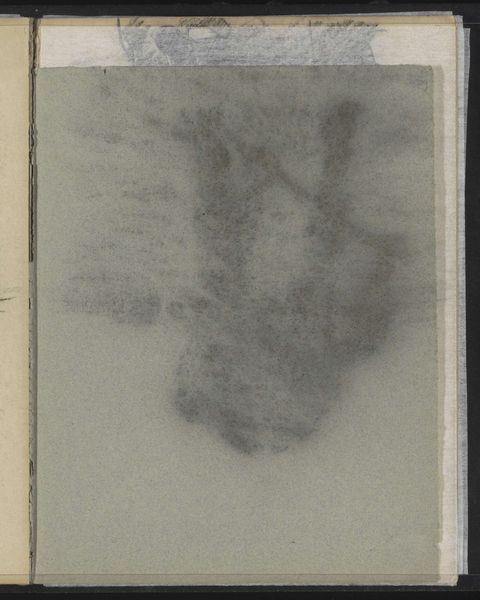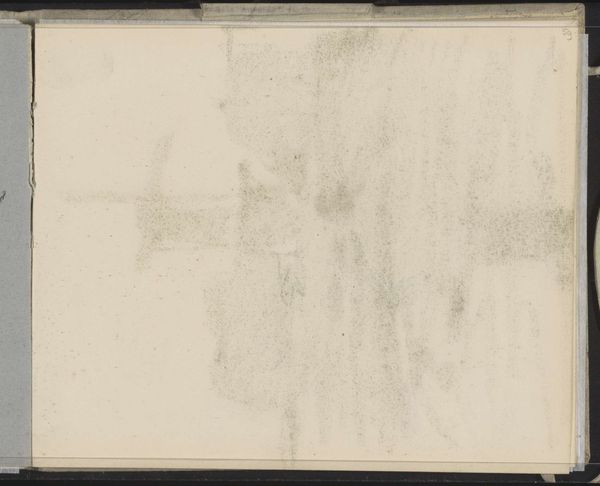
print, cyanotype, photography
#
still-life-photography
#
water colours
# print
#
cyanotype
#
photography
#
coloured pencil
#
watercolour illustration
#
naturalism
Dimensions: height 250 mm, width 200 mm
Copyright: Rijks Museum: Open Domain
Anna Atkins made this cyanotype of Bangia laminariae, a type of red algae, in the mid-19th century. This print belongs to a series, "Photographs of British Algae: Cyanotype Impressions," one of the first books to be illustrated with photography. Atkins used the cyanotype process, an early photographic technique that relies on the interaction of ultraviolet light with iron salts to produce a distinctive Prussian blue print. This process was relatively simple and inexpensive, allowing Atkins to document British algae specimens directly and precisely. The stark white algae, set against the deep blue background, possesses a ghostly beauty. The technique allowed for a degree of reproducibility, which suited the Victorian obsession with cataloging and classifying the natural world. In that sense, the cyanotype was well-matched to the era's scientific aspirations. By focusing on the material and the process behind this work, we can see how Atkins combined artistic sensibility with scientific accuracy, blurring the boundaries between art, science, and craft.
Comments
No comments
Be the first to comment and join the conversation on the ultimate creative platform.
